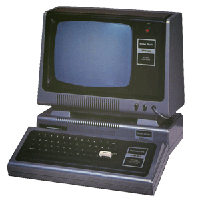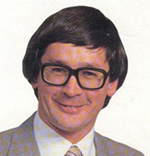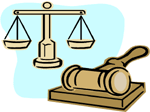Origins - The history behind the System 80
The Original Template. The Tandy TRS-80 Model 1

The story of the System 80/Video Genie/PMC 80 starts with another machine, the Tandy TRS-80 Model 1, seen here in the picture (borrowed from www.trs-80.com) opposite. This venerable computer, invented by Don French & Steve Leininger for Tandy, was initially released in 1977 with a tiny subset of Tandy-written BASIC and just 4k of RAM. This RAM was soon quadrupled to 16k, Level 1 was tossed out in favour of a usable version of Microsoft BASIC (called Level 2), and the unit was given the accessories to warp to disk capability. To top it off, Tandy's Radio Shack stores gave the computer an automatic distribution chain in the U.S.
It was a great success!
The Importance of Software Support
Very soon, a whole culture grew around the TRS-80 Model 1 supported by numerous magazines and an abundance of software. A similar culture developed around the Apple 2, and to a lesser degree the Commodore Pet.
The enthusiasm and sales these machines generated did not go un-noticed by other electronic manufactures and entrepreneurs who quickly saw the potential of the microcomputer market. However, new computer manufactures faced a dilemma. Improved specifications took engineering innovation. Also, machines may have had innovative features, but without software they were little better than toys to tinker with. Sophisticated software was difficult and expensive to write, and manufactures seldom had the time, skill or capitol to invest in it!
Yet, they needed software to sell their computers. Machines would only "take off" in the market place if software was available and this took a lot of investment. Either the manufacture would have to write the software, or enough interest had to be generated (by good hardware, support, hype, gimmicks and marketing) to get others excited enough to write it. Also programmers who want to sell programs wouldn't write code unless the machine seemed to have a future. The good hardware, support, hype, gimmicks and marketing also had to convince them!
EACA and Dick Smith Electronics
 The
year was 1978. EACA was a Hong Kong-based
company specializing in simple electronic toys. At that time the
company had a relationship with entrepreneur Dick Smith (photo opposite),
an Australian businessman who had developed a number of chain stores that
went by the name Dick Smith Electronics (DSE). These stores specialised
in hobby electronics and gadgetry somewhat similar to Tandy's Radio Shack
line of stores in the US, through which the TRS-80 Model 1 was sold. EACA
was supplying "pong-type" TV game units to DSE for distribution
in Australia.
The
year was 1978. EACA was a Hong Kong-based
company specializing in simple electronic toys. At that time the
company had a relationship with entrepreneur Dick Smith (photo opposite),
an Australian businessman who had developed a number of chain stores that
went by the name Dick Smith Electronics (DSE). These stores specialised
in hobby electronics and gadgetry somewhat similar to Tandy's Radio Shack
line of stores in the US, through which the TRS-80 Model 1 was sold. EACA
was supplying "pong-type" TV game units to DSE for distribution
in Australia.
Clone Conversations
EACA had competent engineers and saw an advantage in manufacturing a microcomputer, which (for the reasons above) was compatible with existing software. During a conversation with Dick Smith, Eric Chung, owner of EACA floated the idea of cloning an Apple 2, hence cashing in on the growing Apple software base. DSE could perhaps market this machine in Australia? Dick Smith felt the Apple 2 clone would be too expensive, and a better option might be to look at a TRS-80 Model 1 compatible machine. That way they would have a cheaper, more affordable computer and so sell more units.
The conversation was forgotten and Dick Smith heard nothing more about a "clone" computer, Tandy, Apple, or otherwise until months later, when, out of the blue and quite unexpectedly, EACA announced they had produced such a thing. The System 80/Video Genie/PMC-80 had been born!
A Late Arrival
The System 80 was announced as a product by DSE on September 1st, 1979. However, machines did not appear in Dick Smith Stores in Australia until May, 1980? There were a number of rumours flying around at the time as to why, some of which are mentioned in this review. One rumour was that negotiations between EACA and Microsoft for Microsoft's Level 2 BASIC (the same version they had licensed to Tandy for the TRS-80 Model 1) went on for longer than anticipated and were not settled until early 1980. According to an article in Micro-80 (Issue 6, May 1980), these negotiations had dragged on for 18 months!
However, the real reason (according to a reliable source) appears to be quality issues at EACA. The first units assembled were practically unusable and Dick Smith Ltd. spent some time with EACA trying to sort the problems out. Finally a useable machine emerged, although the first variant still had significant shortcomings, as detailed in the hardware section.
Legal Status
 Despite
EACA's assurances that all the legal paperwork had been done, Dick Smith
and others in his organization were always a little doubtful of this claim,
and 1/2 expected lawyers from either Microsoft or Tandy to come knocking
any day.
Despite
EACA's assurances that all the legal paperwork had been done, Dick Smith
and others in his organization were always a little doubtful of this claim,
and 1/2 expected lawyers from either Microsoft or Tandy to come knocking
any day.
Was it all legitimate and above board? Well, mostly.
EACA developed this clone with no reference to Tandy. That much is known. They had simply copied the TRS-80 Model 1 ROM, changing only a tiny segment of it to accommodate hardware differences. However, most of the code in the ROM was actually owned by Microsoft, not Tandy and in fact the Microsoft Interpreter in ROM was legal. The following facts back this up:
1. Tandy employed Microsoft to write Level 2 BASIC but it was only licensed (non-exclusively) to Tandy, not sold to them. Bill Gates used a similar strategy with PC-DOS and IBM which is why he could sell the DOS (otherwise called MS-DOS) to IBM clones.
2. Bill Gates is on record saying he licensed his BASIC to EACA. This appears in a March 1980 interview transcript involving Bill Gates talking about copyright issues. This transcript can be found in several places on the web. http://slashdot.org/features/00/01/20/1316236.shtml is one such place. During this interview, Gates (G) says the following:B-K: What about modifications? Minor modifications to programs and reorganization, and then re-issuance? How do you feel about that? There are rumors, which you probably have more reliable information on, about the copies of machines like the TRS-80 to appear using essentially your writing of Level II. How do you feel about a minor rewrite of all of your work? And how do you think you would approach that if such a machine were in fact to appear?
G: Well, you must be talking about the EACA machine, which is a Hong Kong company that's coming in and licensed our BASIC.
B-K: They have licensed it from you?
G: Certainly.
B-K: Okay, I was not aware...3. On every System 80 Machine (at least the four or five I have seen) there is a sticker on the bottom saying "BASIC Interpreter, Copyright (C) by Microsoft 1980, All Rights Reserved".
What was not legal though, was the other 4k (well, 2.5k as 1.5k was empty) of ROM which contained Tandy's I/O routines and other code. It was this that produced a ruling in favour of Tandy, when the latter took Personal Micro Computers Inc (Distributors of the U.S.-badged EACA machine, the PMC-80) to court in 1981.
Why Tandy never slapped a court order on EACA, or any of the other global distributors such as Dick Smith Electronics is not known. It could be that their management was in some disarray (old Charles Tandy had just died) or they may not have felt confident about an International legal challenge? They might have just decided that there was little to be gained by mounting an international challenge considering the U.S. was their main market focus and the TRS-80 Model 1 was being phased out anyway. Possibly all of those reasons.
Homegrown clones such as the LNW 80 introduced in late 1980 appear to have written their own I/O code so copyright violation was not an issue.
Another article on the legal challenge described above can be found on Matthew Reed's excellent TRS-80 Model I/III website.
An Evolutionary but Initially Flawed Machine.
The System 80 was a TRS-80 Model 1 clone, but it also had some evolutionary features which showed improvements over the Tandy computer. However, the first units off the production line also had some notable omissions which more than negated these improvements! Thankfully these were soon rectified. More on this, the computer, and all its variants here.
Footnote:
Although Dick Smith in conversation with EACA's Eric Chung rejected the notion of an Apple 2 clone in favour of the TRS-80 Model 1, in 1984 his (now ex-) company Dick Smith Electronics (which had been sold to Woolworths in 1982) branded and distributed such a computer from another Hong Kong firm (Video Technology). The Dick Smith Cat.
As to Dick Smith himself, after selling DSE he went on to a life of adventure, further business ventures and public service. He became an Australian icon and was voted Australian of the Year in 1986, He is now involved in the food business ( See http://www.dicksmithfoods.com.au/ ). The site has a biography on Dick Smith in the "About Us" section.